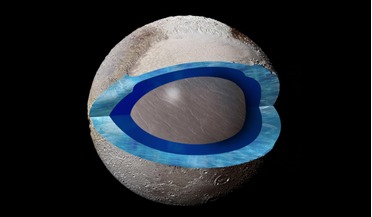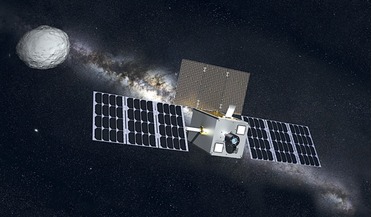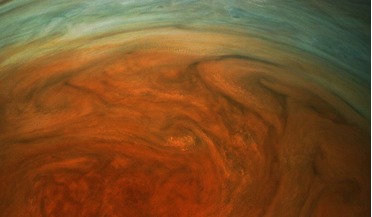 18 November 2016
Pluto's heart is an ocean of slushy ice
18 November 2016
Pluto's heart is an ocean of slushy ice
... planet's most prominent surface feature – a heart-shaped region named Tombaugh Regio – is hiding a cold, slushy ocean of water ice just below its surface that has strong links with the evolution of key features such as the...
 July 2018
The rise of interplanetary CubeSats
July 2018
The rise of interplanetary CubeSats
...the permanently shadowed craters of the lunar south pole for water ice. Others, like BioSentinel led by NASA Ames, will be... to LunaH-Map but will use an infrared spectrometer to look for water ice in the lunar south pole. As with LunaH-Map, it will ...
 October 2017
Cassini observations open up Saturn’s atmosphere
October 2017
Cassini observations open up Saturn’s atmosphere
... of the storm produced lightning strikes that could be heard by Cassini’s radio detectors and fresh ammonia and water ice that could be seen in the near-infrared. Not only that, but enormous changes to the temperature and...
 January 2021
Evolution of volatiles on the Moon
January 2021
Evolution of volatiles on the Moon
... topography of the lunar south pole with embedded water ice (blue shading). Many of these craters are ... is locally sourced is one less thing we need to bring with us. Water ice is among the most precious resources we could find, because not only is...
 April 2025
Racing to the Moon
April 2025
Racing to the Moon
...explore and sample the site, hoping to confirm claims of water ice on or near the surface. After a short visit, ...deploy an orbiter and south polar lander to prospect for water ice. According to a Chinese National Space Agency press release quoting...
 03 September 2018
Water discovered in Jupiter's Great Red Spot suggests plenty more down below
03 September 2018
Water discovered in Jupiter's Great Red Spot suggests plenty more down below
... the theory that the clouds are made up of three different chemical layers; a lower layer made of water ice and liquid water, a middle one made of ammonia and sulphur, and an upper layer made of ammonia. The deepest cloud...